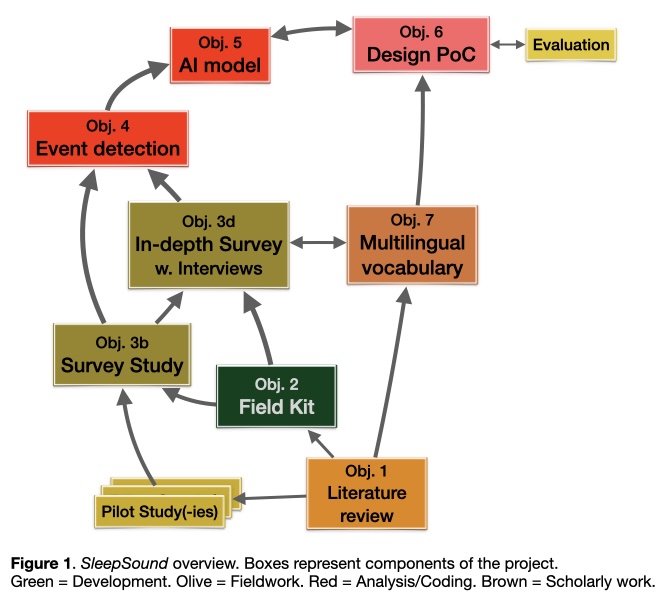SleepSound
Charting the Nighttime Soundscape and Sleep Quality in Hong Kong through Machine Listening and AI-supported Information Design
- PI : PerMagnus Lindborg
- Co-Is : TBC
About
This project is about sleep and soundscape. Within the context of domestic bedrooms in Hong Kong, we analyse the prevalence of types of sounds and their impact on sleep quality.

Pilot Study
The PI conducted a pilot study (N = 10) on soundscape and sleep in Hong Kong in September-October 2024.
Participants & procedure. Online questionnaire with QuestionPro. Participants were gathered using convenience and snowball sampling. After consenting, participants self-rated Circadian Type (CT; estimated with rMEQ; Adan & Almirall 1991), and Sleep Quality (SQ; estimated with BPSQI; Sancho-Domingo et al. 2021). They measured Acoustic Quality (AQ; LAeq1min, LCeq1min) in their bedroom with an iPhone app, NoiseLab-Lite.
Results. Participant age mean 27, range 21…31 years; 8 female; all students; no hearing problem. SQ: mean 0.65, range 0.53…0.73 (range of scale 0…1, higher is better quality). CT: 4 morning, 6 evening. AQ: 5 low, 5 high noise level.
Analysis. We conducted linear regression with SQ as outcome. A parsimonious model (adj. R2 = 0.83) was found with AQ as significant predictor variable (ß = -0.47, p = 0.011*), i.e. higher noise level was associated with lower sleep quality; and a significant interaction between AQ and CT (ß = -0.81, p = 0.001**), i.e. for Evening types this effect was stronger.
Sound Types. The participants named 25 sounds in total, which were interpreted in four categories (ISO 13912:2). Prevalence and mean pleasantness (scale: -2…+2) were: Traffic 28%, -0.57; Other 48%, -1.1; Humans 20%, 0.0; Nature 4%, 1.0. The most common sounds were: air conditioning (36%, -1.1), car (16%, -0.75), home appliances (12%, -1.0), traffic (12%, -0.33), and movement (12%, 0.33).
Discussion. These results from a small pilot investigation indicated a significant association between higher noise levels in participants’ bedrooms and lower sleep quality, which was pronounced amongst evening circadian types, aka ‘night owls’. Noise from air conditioning was the most commonly heard, and perceived negatively. A few sound sources were rated as positive, such as evidence of other people’s movement and actions, and nature sounds. Human and Nature sound types were more often heard by Morning circadian types, aka ‘early birds’.